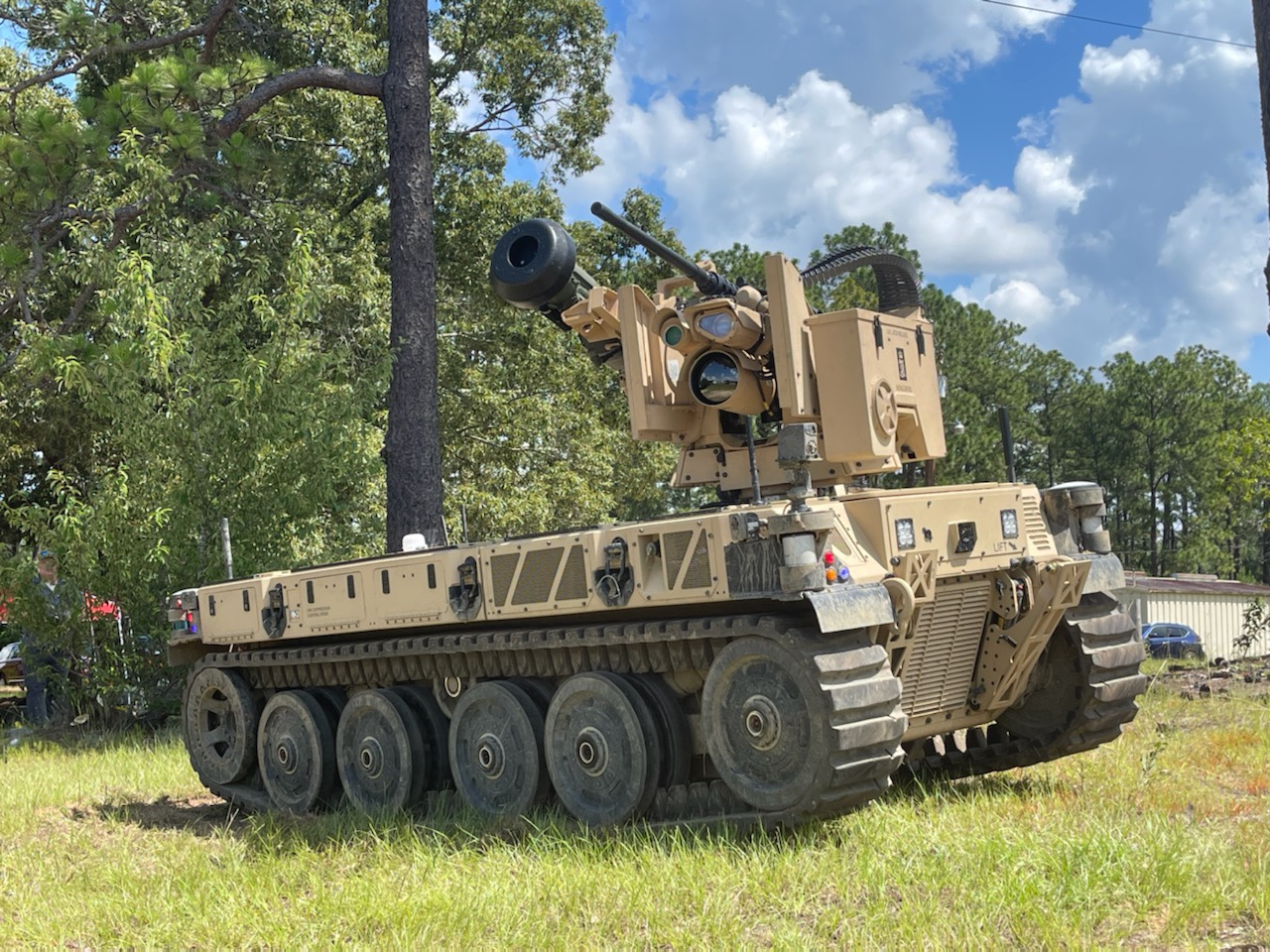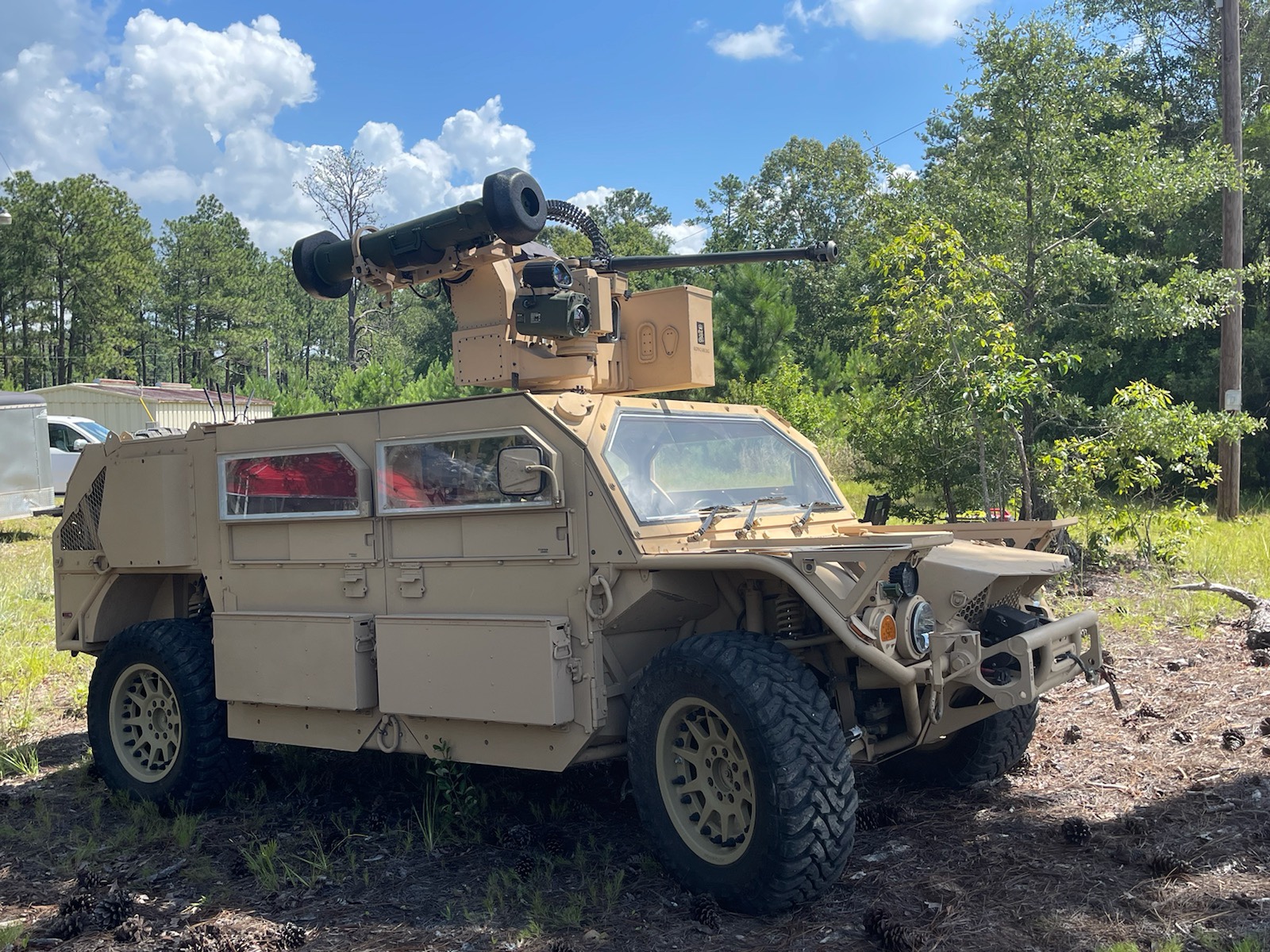Kongsberg systems still superior in accuracy, reliability and network capabilities
JOHNSTOWN, PENN., July 15, 2021 – During a multi-day demonstration at Fort Benning, Georgia, KONGSBERG Defence and Aerospace used four different remote weapon systems to demonstrate future lethality and cutting-edge capabilities which can be leveraged by the more than 17,000 systems already fielded in the U.S. military’s current inventory. This also was the first ever demonstration where multiple targets were engaged using multiple unmanned platforms simultaneously.
The ground-breaking demonstration was held at the U.S. Army Maneuver Center for Excellence and spanned July 14-15, 2021. Two light combat vehicles and two unmanned ground vehicles were each equipped with different configurations of the KONGSBERG CROWS-Javelin (CROWS-J) and Protector RS6 Remote Weapon Station (RWS), all while networked to one another through the Common Protector Interface (CPI), the standard in remote lethality architecture for U.S. Army and U.S. Marine Corps remote weapon systems.
“KONGSBERG remote weapon systems are powerful force multipliers, especially with the addition of Multi-User, Multi Station (MUMS) capabilities and network advancements that bring incredible value to the U.S. military and allied forces as we continue to earn and prove our position as the remote weapon system of choice for deployment across a broad range of platforms,” said Scott Burk, vice president of Business Development at KONGSBERG Defence and Aerospace. “Our continued investments in the architecture and platforms overall maximize the U.S. military’s current inventory, training and provisioning while providing groundbreaking advancements in capability. We wanted to demonstrate new capabilities – rather than competencies we’ve long ago qualified for the Department of Defense – and we are pleased the engagements were flawless.”

QinetiQ North America’s Robotic Combat Vehicle-Light (RCV-L) unmanned vehicle was among the platforms used, demonstrating advanced network lethality capabilities and innovations that meet the needs of the Army and other customers well beyond the next decade. The CROWS systems also simultaneously demonstrated Tech Refresh’s backwards compatibility with legacy CROWS systems.

Further, KONGSBERG continued to showcase its PROTECTOR RS6 platform by successfully firing XM914 (30x113mm) from a lightweight, Flyer Defense Ground Mobility Vehicle (GMV). The RS6 RWS is the system selected by the U.S. Marine Corps for the Marine Air Defense Integrated System (MADIS) program. This firing followed immediately after the successful firing of Javelin anti-tank missiles from the same systems for the US Army at Redstone Arsenal in Alabama in May. This further validates the inherent flexibility of the RS6 design, which allows users to address a broad range of threats and operational needs – C-UAS, SHORAD, ATGM, Maneuver Support, Manned / Unmanned Teaming (MUM-T) – from a single system.
With more than 20,000 systems delivered worldwide and 14 years of CROWS experience, KONGSBERG will continue to support the soldiers with new systems, capabilities and features meeting tomorrow’s requirements while maintaining, supporting and keeping up to date a wide range of CROWS variants and support equipment. All CROWS and RWS systems are produced in the KONGSBERG Johnstown, PA facility. Continuing the execution of this contract secures 3,000+ jobs, both directly and through the KONGSBERG U.S. supply chain. With systems sold to 26 nations, KONGSBERG is the world-leading provider of remote weapon stations.


The provided images highlight a problem with Javelins mounted on RWS’
The encased missile system, specifically the weapons seeker, is not designed for prolonged exposure to the elements. Before any engagement someone is going to have to climb out and remove the forward end cap
Former Dirt Dart,
That is an important requirement for a un-manned vehicle. Though if military members are going to patrolling with the vehicle on foot or in UTV would it be less of a factor?
The US military wants a new Anti-tank missile system:
https://www.defensenews.com/news/your-army/2021/04/15/the-army-wants-an-anti-tank-missile-that-shoots-twice-as-far-as-its-current-weapon/
Hopefully these integration details are captured early on.
Former Dirt Dart,
You can probably reach out and give some feedback to the team renewing the capability. What is the worst they could do? Ignore your comments. LOL Your comments are good reflection on the situation…